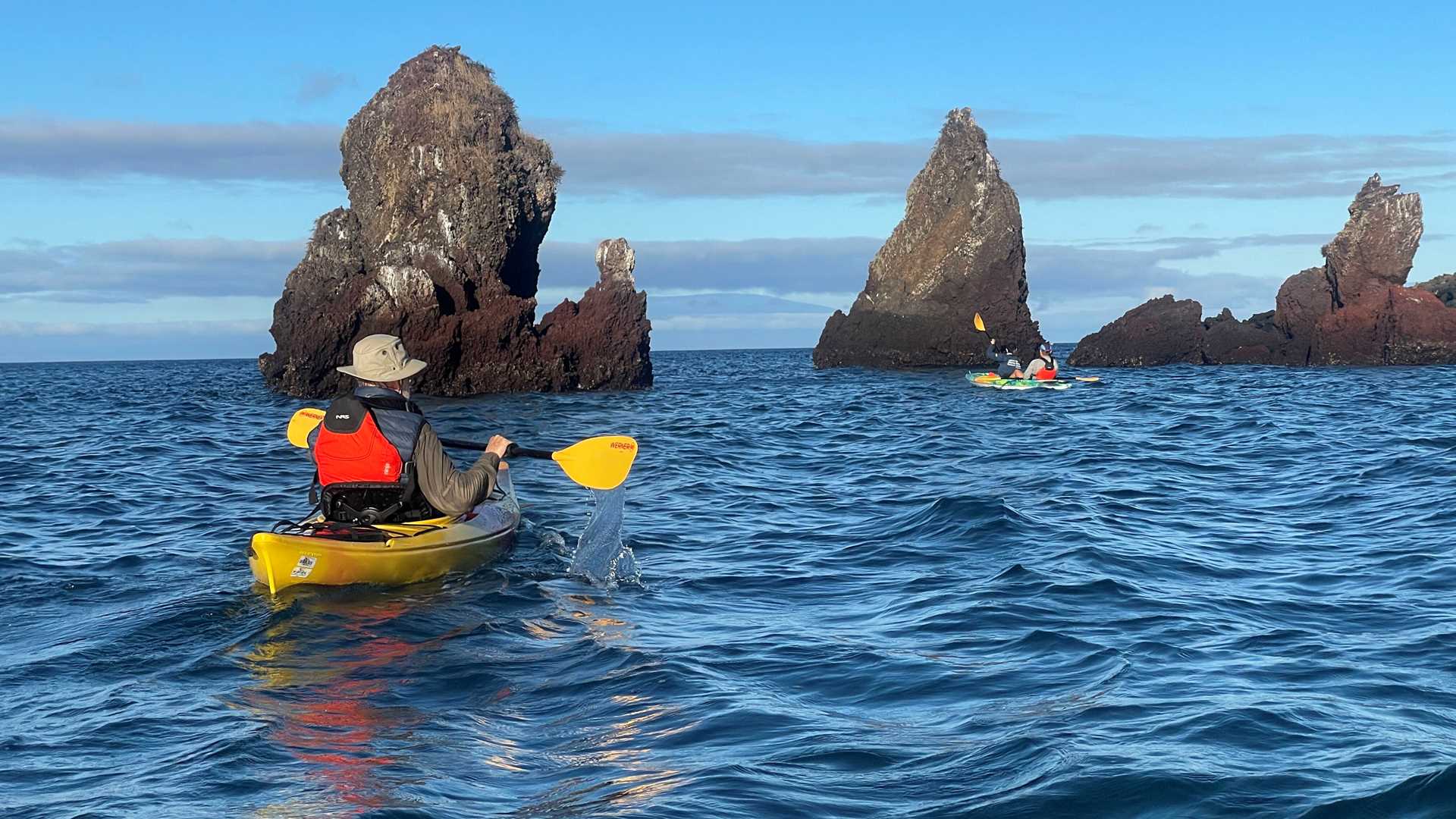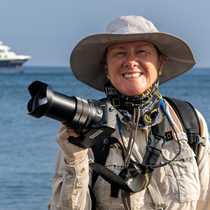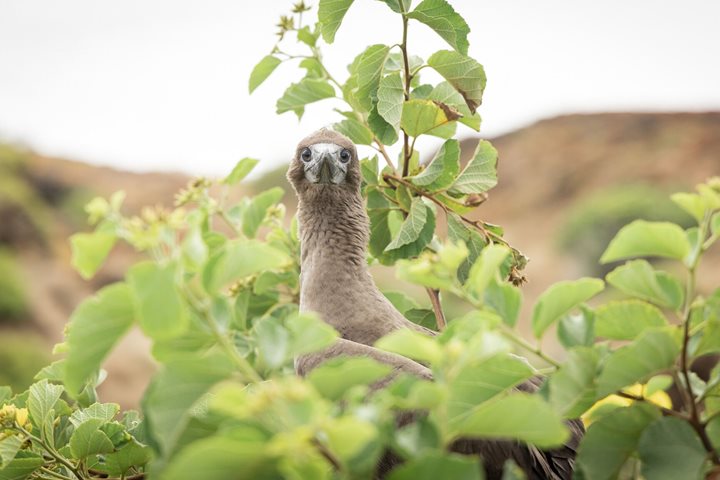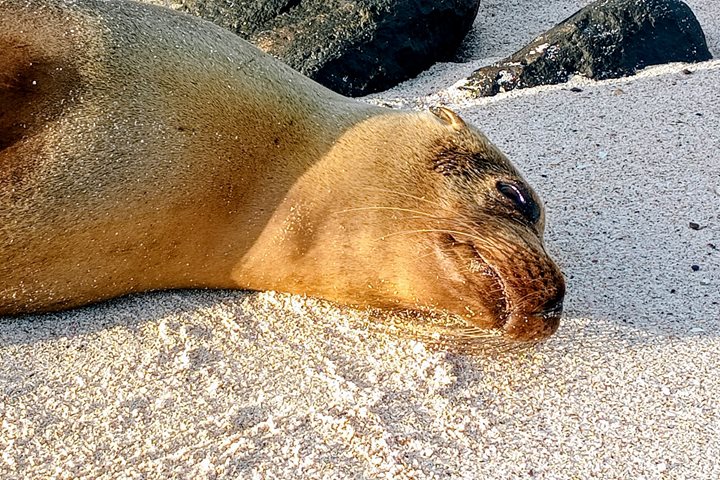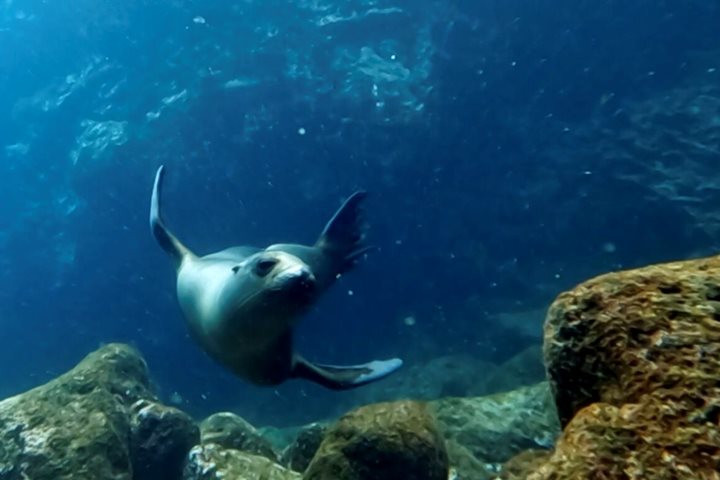Morning activities started early…before breakfast! Eager photographers visited the fine sand beach at Espumilla on Santiago Island with on-board photo instructor Anahi. A small group accompanied me on an adventurous kayak paddle along the shores of James Bay towards Buccaneer Cove. Fur seals growled and screeched from between the boulders while Galapagos sea lions accompanied us in the water–jumping alongside or in front or in back or somewhere nearby. Wet, shiny, dark brown pelts reflected flashes of sunlight which we caught in glimpses from the corners of our eyes. I expected the wind to pick up a bit as it always does after an hour or so, but it came with more power than expected! Enough that I lowered my guard and capsized in a flash. But no big deal…water temperatures are fine, and everything with me was waterproof. Everyone certainly had a good laugh at my expense! Fortunately, no one was filming…
During breakfast, the captain repositioned the ship to Buccaneer Bay, where we snorkeled, kayaked, and used the glass-bottom boat to explore the undersea world of Galapagos. Parrotfish! Hogfish! Pufferfish! Black, green, and white sea urchins! Blue, yellow, and red sea stars. Some even looked like chocolate chip cookies!
On board for this expedition, we are carrying scientists from the Charles Darwin Research Station, a Galapagos National Park warden, and two guests from the National Geographic Society. All these individuals are involved in researching the deep ocean of the Galapagos Marine Reserve using deep sea camera systems. Whenever we can help, Lindblad Expeditions enjoys providing a platform for this type of research, or any type for that matter. What better platform than National Geographic Islander II?! The team organized two camera drops and recovery, one in the morning and one in the afternoon. Whatever is caught on film is sure to increase our knowledge of the Galapagos Marine Reserve since virtually everything at those depths is pretty much new to science.
The afternoon was spent in lovely light as we meandered along the shoreline of Puerto Egas. It is October here, and although Galapagos is not on the way to anywhere, we do occasionally spot a few migrating shorebirds. Today there were sandpipers in droves, ruddy turnstones, and semipalmated plovers in a mixed flock. Galapagos sea lions are giving birth these days, so pups of one to two weeks old are starting to appear in the cracks and shelves of tuff stone and lava. Santiago marine iguanas are looking tubby and healthy, and a wonderful feeding frenzy took place near shore while an unidentified whale blew in the far distance.
What a serene finale to an expedition. May you have fair winds and following seas on your next journey.

